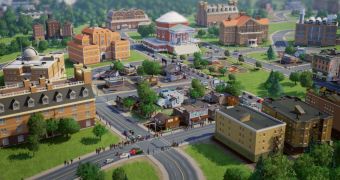Kip Katsarelis, who is a leading producer working on Sim City at the Maxis studio, has explained to the fan base why the new Sim City is using an always-on structure and how that will impact the multiplayer aspect of the game.
After he demoed the game via livestream, he stated that, “Cities are no longer in a bubble. You can play in a region with other cities, and there’s a lot simulation that’s going on between cities. You can play multiple cities or invite friends into your region and play with others. Things like power and water are shared across cities and you can purchase that power. You can share services like fire, education and garbage.”
The biggest advantage of having more than one city sharing a region is that they can pool their resources in order to create public works that will benefit all of them in the long term.
He added, “We have things like international airports that you can work on together and build up, and the airports will actually bring tourists into your region and allow you to ship more freight in and out. There’s just a lot more to do at this macro level of city planning.”
The new Sim City uses a new Glassbox engine that’s designed to allow players increased control over how they build their settlements and the way they interact with their neighbors.
The new technology allows for individual agents in the city to act on their own and then dynamically create situations, ranging from economic booms to devastating traffic jams, that players will have to deal with.
The new game also introduces curved roads to the franchise for the first time and will include a global economic system that determines the price of certain resources.
Sim City will be launched exclusively on the PC during February 2013.

 14 DAY TRIAL //
14 DAY TRIAL //